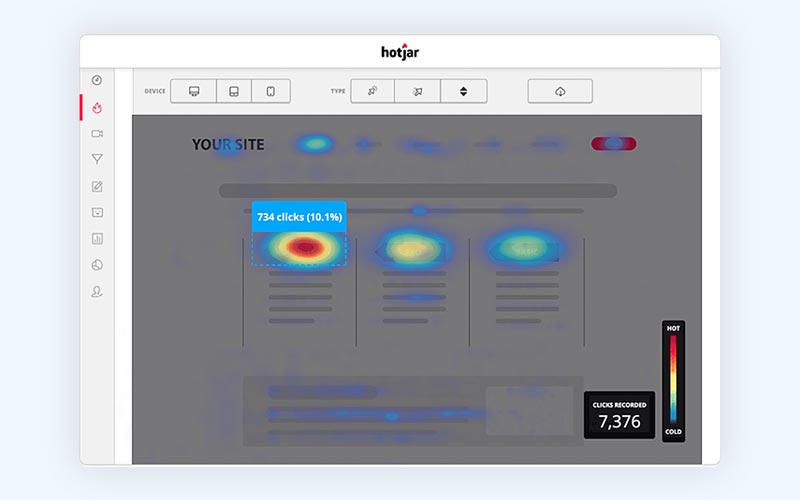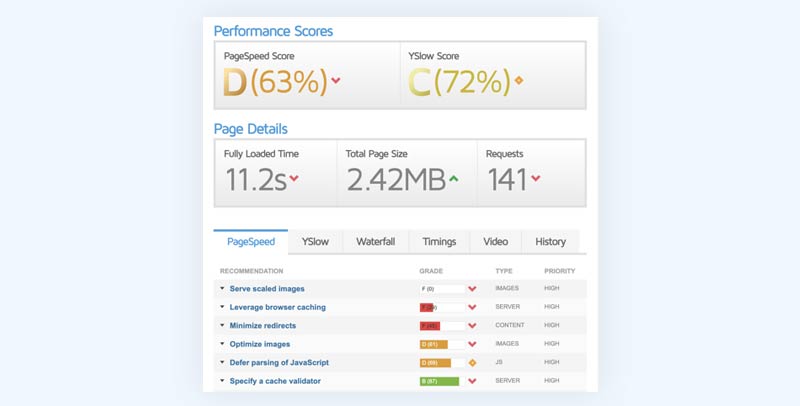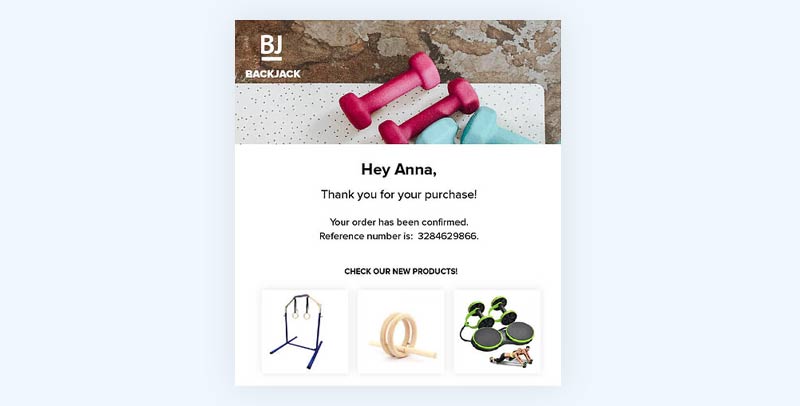
Did you know that winning the business of a new customer costs 5x more than retaining a current one? Or that the success rate of selling to an existing customer is 60-70% compared to the 5-20% success rate selling to new customers?
Retaining existing customers is arguably more important for e-merchants than winning new ones, yet e-commerce marketing strategies are often directed entirely toward acquisition. In fact, only 29% of brands nurture existing customers beyond their initial purchase.
E-merchants wanting to see a high ROI on their marketing efforts and achieve stable, long-term e-commerce growth need to change their mindset and work to build brand loyalty.
When done successfully, increasing customer retention by just 5% can increase revenue by between 25-95%. Follow these 3 steps to increase e-commerce customer retention and see huge levels of growth in your online store.
1. Make shopping online easy to drive customer retention
Convenience is king when it comes to e-commerce shopping. Customers are willing to buy products they haven’t tried on or seen in person because they can make a purchase without leaving the couch.
Customers are willing to input personal information and pay for products in advance, then hope that e-merchants dispatch everything quickly and that the package arrives undamaged. E-merchants need to do everything they can to mitigate these risks and make online shopping not just convenient, but safe and reliable.
Here are 4 key things e-merchants need to ensure online shopping is easy for customers:
An optimized e-commerce website
A successful e-commerce store needs to be intuitive and user friendly, so focusing on UX is key. If a customer struggles to find what they’re looking for or is sick of waiting for a page to load, chances of retention drop drastically.
E-merchants need to check their website for any customer pain-points with a heat-mapping software like Hotjar. Hotjar users can visually understand the customer’s journey on their website and identify any problem areas.

Is there a button customers should click but don’t? Are there certain products customers are struggling to find? Identify the common drop-off points in the customer journey, pinpoint the problem causing the drop-off, and solve it.
Another common frustration turning customers away from online shopping is slow website loading times. E-commerce marketing tools such as GT Metrix show e-merchants their current website speed and sends notifications if their website speed slows down in the future. This allows e-merchants to rectify any issues with website speed as soon as the problem arises.
E-merchants who optimize their website for both usability and speed are well on their way to e-commerce customer retention.

A quick and simple checkout process
Asking customers to sign up for a newsletter or become a VIP member is a great way to boost a contact list and increase long-term engagement, but forcing customers to fill out these long forms at checkout is also a surefire way to drive cart abandonment.
Studies have shown that 28% of customers will abandon a purchase if they’re asked to create an account at checkout, and an additional 21% will abandon a cart if the checkout process is too long or complicated.
Give customers the choice to create an account and become a member if they want to, but don’t force everyone. If a customer wants a speedy checkout, that should always be an option.

An automated post-purchase campaign
Online shoppers want immediate proof of purchase once they’ve bought an item. Send all customers an automated order confirmation email with a reference number so they can easily check on the progress of their order.
Order confirmation emails have the highest open rate of any marketing emails, so use them as an opportunity to recommend complementary products or get customers excited about an upcoming sale or new product release.
Once the order arrives, enroll the customer in a post-purchase campaign. This serves to check in on the customer, showcase additional products, and potentially incentivize a future sale with a small discount code.
E-merchants can also use a post-purchase campaign to ask customers for a testimonial or review. Not only will these provide valuable social proof, but reviews are also a great way for e-merchants to learn from each customer’s shopping experience to make more customer-oriented decisions in the future.

An accurate delivery date
It’s imperative for e-merchants to:
- Provide an expected delivery date at check-out
- Reinforce this with a trackable shipping confirmation email
- Make sure the product arrives either on or before the set date
Falling at any of these hurdles could be hugely detrimental to both immediate sales and long-term e-commerce customer retention. Studies have shown that 24% of customers would abandon a cart if no delivery date is given, and 69% of customers would be less likely to shop with a brand again if their order was more than 2 days late.
The ability to purchase a good then and there is the main draw-card of brick-and-mortar retail. The only way for e-merchants to combat this is by ensuring that customers receive what they want when they want it.
2. Retain e-commerce customers with competitive pricing
One of the most harmful misconceptions about online shopping is that it’s more expensive than brick-and-mortar retail. E-merchants need to show customers that online shopping is not just the most convenient option, it’s also the most cost-effective.
Reward loyal customers with deals and discounts
Loyalty programs
Did you know that 72% of US shoppers already belong to at least one loyalty program? Or that members of loyalty programs generate 12-18% more revenue for retailers than customers who are not part of loyalty programs? Embrace this growing trend and encourage regular customers to join a loyalty program to earn points and win special rewards.
A loyalty program is an e-commerce customer retention strategy designed to identify and reward people who purchase on a recurring basis. The goal is to incentivize them so they keep doing what they’re doing.
A first-class loyalty program collects data provided by the customer along with their purchasing history to analyze shopping habits. Then, uses this information to create personalized, timely, and relevant offers.
Loyalty programs are the ultimate win-win because the more money a customer spends, the more money they stand to save, and the more revenue the e-merchant makes.

Reward schemes
The simplest way to inspire a customer to buy more? Give them bigger rewards the more they spend. There are several types of reward schemes that e-merchants can easily implement in their e-commerce store.
Provide the opportunity for members to earn points that they can redeem on their next purchase, or exchange for a gift once they’ve collected a certain amount. Airlines have long been the champions of this type of reward scheme with their frequent flyer programs, but retailers (on and offline) like Sephora have also had success with it.
To make sure your customers are aware of these benefits, send them an email now and again informing them of how many points they’ve collected. In Q4, you can even add an urgency element to it: remind loyalty program members their points have an expiration date and they need to redeem them before the end of the year.
Exclusive discounts
Send discount codes year-round to existing customers for a quick boost in sales, to make customers feel valued, and to increase e-commerce customer retention.
The biggest online travel companies use discounts to make sure that their prized returning customers don’t start eyeing products offered by the competition. For example, Booking.com offers a 10% discount on selected properties to members of its Genius program.
To make the most out of discount codes, send them via SMS, as customers open and redeem discount codes sent over SMS 10x more than discount codes send over any other marketing medium.
Time-sensitive deals
Time-sensitive deals can be super effective at prompting shoppers to buy because they create a sense of urgency.
Instill this sense of urgency by either saying the product in question is low in stock, or the time left to use the special deal is almost over.
Time-sensitive deals are a great way to win un-planned purchases from existing customers and to make them feel valued.
Early access to new releases
When customers are particularly passionate about a brand and it’s products, they’re thrilled to receive early access to new product releases.
This is some real VIP treatment that, if communicated well, creates hype around a new range, collection or product and is a great way to encourage shoppers to purchase.
A subscription model with benefits
Subscription models are another form of loyalty program. While they may not make sense for some e-commerce businesses, in certain cases, they can be incredibly effective.
Subscription models work particularly well for e-merchants who sell products that customers need to replenish on a regular basis (cleaning supplies or beauty products, for example).
Tempt customers into paying for subscriptions by using exclusive membership perks, as Amazon have done with their Prime subscription option. The e-commerce giant offers free shipping and includes a video streaming service in its subscription model to incentivize customers to sign up.

Remove shipping costs for purchases over a certain amount
Shipping is not free. At the end of the day, someone has to pay for it. But it may be worth it for e-merchants to incur these costs if it means winning new customers and drastically increasing AOV.
This isn’t to say e-merchants should offer free shipping with every order. Instead, set a site-wide free-shipping threshold that encourages customers to spend over a certain amount. If a customer faces the choice of forking out $5 for shipping or spending an extra $15 on a t-shirt that they didn’t initially want to qualify for free shipping, more often than not they’ll choose the t-shirt and the e-merchant makes an extra $10.
Statistics back this up with 94% of US shoppers saying they have taken some type of action to qualify for free shipping.
Free shipping is not just a great way to increase AOV, it’s also an important way to win potential customers, with 74% of online shoppers saying that free shipping is one of the most important factors at checkout.
3. Make customers feel valued to retain them long term
If a customer regularly shops in the same brick-and-mortar store, chances are they will have formed some sort of emotional connection with the place. Being greeted with a friendly smile, or being personally thanked by a shop keeper after making a purchase make a customer feel valued.
E-merchants need to do all they can to form a similar bond with customers. Nurture new customers and make them feel a connection with the team behind the brand to drive them to stay loyal.
Send regular personalized communications
Personalized communication goes far beyond simply addressing the email, SMS, or Funnel to each customer by name. This is certainly important, but e-commerce marketers can go much further than this to really stand out from the competition.
Branch out beyond simply purchase-related messaging and send existing customers regular personalized content about any upcoming sales, or new product releases, or brand values and keep them engaged.
Ensure that these regular communications are personally relevant for each customer with marketing automation software. E-merchants can divide their contact base into lists defined by factors such as where each contact lives, when they made their last purchase, or how much money they’ve spent in total. E-merchants can then tailor marketing content to each list of customers, ensuring that every customer receives messaging that is relevant to them.
Personally relevant messaging makes customers feel valued and encourages them to become repeat buyers, with 80% of consumers more likely to purchase from a brand that provides a personalized experience.
Make relevant product recommendations
Arguably the most important thing for e-merchants to personalize is product recommendations. E-merchants who recommend products that interest each individual customer show customers that they understand their wants and needs. This will the customer feel valued and increase e-commerce customer retention.
A marketing automation software allows e-merchants to automatically send relevant product recommendations without having to trawl through each customer’s profile. Such software uses an algorithm to recommend products based on each customer’s past browsing or purchasing history. Then, the software will automatically select either a product the customer has once considered purchasing, or one that will perfectly complement a past purchase.
Recommending relevant products makes customers feel valued and understood, with 91% of customers more likely to shop with a brand that provides offers and recommendations that are relevant to them.
Always maintain a high level of customer service
E-merchants don’t have the chance to be charming and helpful in person, so they need to work extra hard to showcase their amazing customer service online or over the phone. Be prepared for any customer queries, and train staff to effectively and gently answer sensitive questions that may arise.
69% of US consumers say that customer service is very important when it comes to their loyalty to a brand. Treat customer questions as an opportunity to showcase customer service and build brand loyalty.
The COVID-19 crisis has directed all the world’s purchasing power at the e-commerce industry, for the moment at least. The challenge now is to maintain this unprecedented control over the market once the lockdowns are over.


